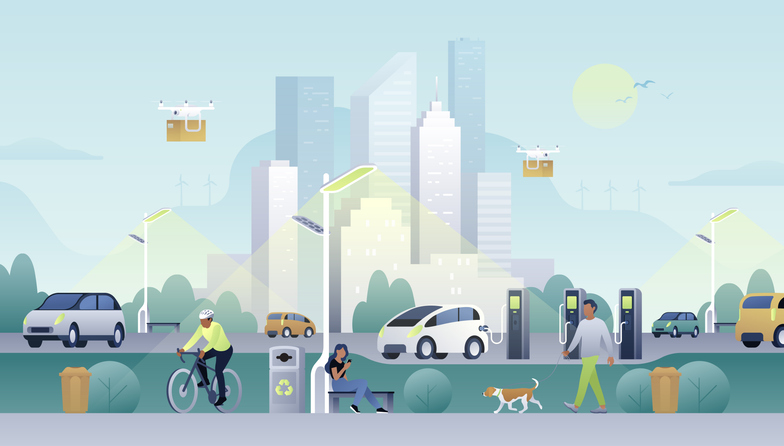The Critical Impact of Synthetic Data Utilization on Smart Cities: Opportunities and Challenges (7/19)
Table of Contents
1. Introduction
A smart city integrates technology and data to make urban living more efficient and convenient. In these cities, data plays a crucial role in various sectors such as transportation, construction, and environmental management. Recently, the use of ‘Synthetic Data’ has gained significant attention. This article explores the importance of data utilization in smart cities and how Synthetic Data contributes to this.
2. Smart Cities and Data
Smart cities collect real-time data through various sensors and IoT (Internet of Things) devices. This data is used to optimize city systems, predict problems, and provide better services to citizens.
2.1. Traffic Management in Smart Cities
- Real-time Traffic Data: Analyzing real-time traffic flow data to adjust traffic signal timings and reduce congestion.
- Public Transport Optimization: Adjusting bus and subway schedules to meet passenger demand and optimizing routes.
2.2. Construction and Urban Planning in Smart Cities
- Building Energy Management: Smart buildings monitor energy consumption in real time and adjust heating, cooling, and lighting as needed.
- Urban Design Simulation: Using simulations to test various scenarios for new buildings or infrastructure to find the optimal design.
2.3. Environmental Management in Smart Cities
- Air Quality Monitoring: Monitoring air pollution levels in real-time using city-wide sensors and taking necessary actions.
- Resource Management: Analyzing consumption patterns of resources like water and electricity to promote efficient management and conservation.
2.4. Public Safety in Smart Cities
- Crime Prediction and Prevention: Analyzing crime data to identify high-risk areas and optimize police patrol routes.
- Disaster Response: Using real-time data to respond quickly to natural disasters or emergencies and minimize damage.
2.5. Healthcare in Smart Cities
- Remote Medical Care: Collecting and analyzing patient health data in real-time to provide remote medical care and monitoring.
- Disease Prediction: Analyzing population health data to predict disease outbreaks and take preventive measures.

3. The Role of Synthetic Data
However, data collection comes with challenges such as privacy concerns, data bias, and collection costs. ‘Synthetic Data’ has emerged as a solution to these issues.
Synthetic Data is artificially generated data based on real data using algorithms. While it cannot completely replace real data, it offers several significant advantages.
3.1. Privacy Protection
- Synthetic Data does not contain personal information, reducing the risk of privacy breaches.
- It can be safely used for research and testing involving sensitive data.
3.2. Data Diversity
- Synthetic Data can include rare conditions or scenarios not often found in real data.
- This improves model generalization and enhances the ability to handle exceptional situations.
3.3. Cost Reduction
- It saves costs associated with large-scale data collection and labeling.
- Sufficient data can be obtained in the early stages of development, enabling rapid prototype development.

4. Examples of Synthetic Data in Various Fields
4.1. Transportation
Synthetic Data is widely used in testing autonomous vehicles. Testing on real roads can be costly and risky. By simulating various road conditions, weather scenarios, and pedestrian behaviors, Synthetic Data helps improve autonomous driving algorithms.
4.2. Construction
In the construction sector, Synthetic Data is used to predict and optimize building energy consumption. Collecting real energy consumption data can take a long time, but Synthetic Data allows for rapid simulation of various climate conditions and building usage patterns to establish optimized energy management strategies.
4.3. Environmental Management
Synthetic Data is useful in developing air pollution prediction models. Real environmental data can be difficult to collect, but Synthetic Data enables the creation of diverse pollution scenarios for model training.
4.4. Public Safety
In public safety, Synthetic Data is used to develop crime prediction models that include various crime occurrence patterns. This helps optimize police patrol routes and enhance crime prevention.
4.5. Healthcare
In healthcare, Synthetic Data is used to develop disease prediction models. By simulating diverse patient data, more accurate prediction models can be created, facilitating early disease detection.

5. Conclusion
The success of smart cities depends on how effectively data is utilized. In particular, Synthetic Data offers innovative solutions in areas such as privacy protection, ensuring data diversity, and cost reduction. Beyond traffic management and construction, Synthetic Data is expected to play a critical role in various fields, including environmental management, public safety, and healthcare.
If you are curious about data utilization, synthetic data, generative AI, AI security, and data security, feel free to explore more on our blog!
Additionally, there is a website called Azoo, which is a platform for the creation and trading of synthetic data. If you are interested, click the link below.
